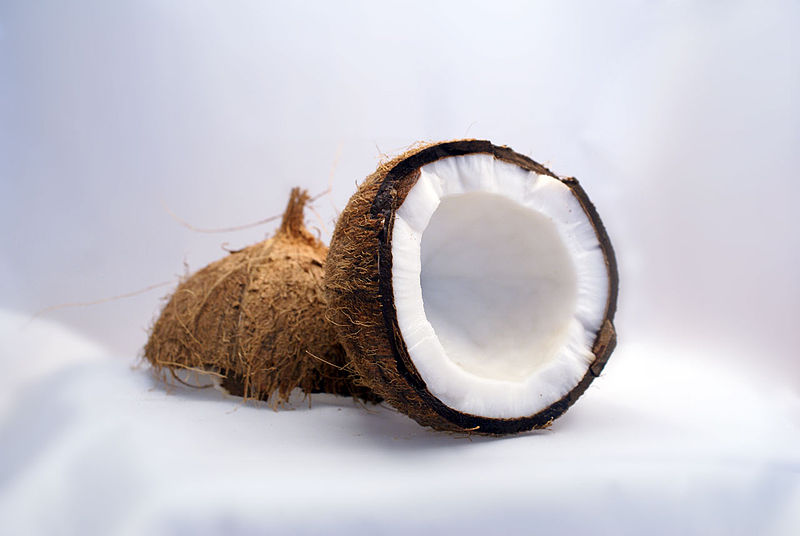
“For I am coconut
and the heart of me
is sweeter
than you know.”
~ Nikki Grimes
Benefits
Coconut is the darling of the paleo community, offering flour to bake with, oil to cook with, milk as a dairy alternative, and the meat itself as a recommended snack. So, what makes it so special? Coconut is high in a rare form of saturated fat called MCT lauric acid, which is also found in mother’s milk:
- It absorbs quickly and easily, even in people with digestive trouble.
- It metabolizes quickly, meaning your body is more likely to use it as energy, and less likely to store it as fat.
- It stabilizes blood sugar.
- It’s anti-inflammatory.
- It’s anti-microbial, meaning that it fights to keep you well. People with leaky gut will be happy to hear that it’s effective against candida, one of worst offenders of bad bacteria in the digestive tract.
Impressive, right? If some part of your mind is thinking, “Wait a minute. Haven’t I been told that coconut oil is bad for me?” Yes, we’ve been told that all saturated fats are bad for us, a theory that simply isn’t backed up by the science:
How is it made?
Now that you know how fabulous coconut is, are you curious how each of the products is made, and how you can use them in your kitchen?
- Coconut oil: First we have to talk about refined and unrefined oils. Refined coconut oil is liquid at room temperature, clear and scent-free. There are no health benefits to this oil. It has been chemically extracted, bleached and deodorized. What you want is the unrefined, virgin coconut oil. It’s an opaque white color which solidifies at temperatures below 76 degrees. Look for it in jars (not bottles) at your grocery store. Don’t worry about extra virgin vs. virgin labeling. Unlike olive oil, there is no difference in these two classifications; with coconut oil, the “extra” is just a marketing ploy. Unrefined, virgin coconut oil is made in one of two ways: (1) Fresh coconut meat is quick-dried and then mechanically pressed to release the oil. (2) The oil is extracted from moist coconut meat, and then the water is separated from the oil through boiling, fermentation, refrigeration, enzymes or mechanical centrifuge. No chemicals are used in in making of virgin coconut oil. Cooking with coconut oil is an excellent way to get more of this nutritious food in your diet. Winter tip: Sometimes it’s hard to scoop the hard oil when your house temperature is in the 60’s. Just run your spoon under some hot water until it heats up, dry it off, and the hot spoon will cut easily through hard oil. Favorite brand: Dr. Bronner’s Organic Virgin Coconut Oil. Update: After writing this article, I learned that there is a coconut oil that’s somewhere between the refined and unrefined forms I mention above. It’s Expeller-Pressed Refined Coconut Oil. It’s solid at room temperature, but no longer has the smell or taste of coconut. Although this special refining process removes beneficial phytonutrients, the fatty acid profile remains the same. So, while unrefined coconut oil is still the healthiest choice, if you dislike the taste of coconut oil, this version of refined is a good compromise, and still contains the magic fat (MCT lauric acid).
- Coconut flour is the fibrous part of the coconut that is left over after making the oil, and then ground into the consistency of flour. For this reason, it’s wise to buy organic, so you’re not getting chemical residue from the refining process. Coconut flour is high in fiber, low in carbohydrates, contains some protein and has a natural sweetness. Because it’s grain-free, it’s a wonderful alternative flour to use in baking. However, you can’t simply substitute coconut flour into a wheat flour recipe. For example, a typical wheat muffin recipe calls for 2 cups of wheat flour and 2 eggs. A typical coconut muffin recipe calls for 1/2 cup coconut flour and 6 eggs. That’s a big difference, but it makes your baking much more nutrient-dense (the opposite of the empty calories typical of wheat-based baking). Favorite brand: Bob’s Red Mill. One last thing: there is such a thing as too much fiber, especially for people with digestive issues. For that reason, eat these baked goods in moderation.
- Coconut milk is something you can easily make yourself, and I have a recipe at the bottom of this post. It’s made from the coconut meat and contains mostly fat (the wonderful kind discussed above), along with some protein and a little bit of fiber and sugar. The coconut milk you buy in the store may seem easier than making your own, but the cans are usually lined with BPA and contain guar gum (which is made from legumes and can be difficult to digest). The large cartons of coconut milk often contain sugar as well as carrageenan (a seaweed derivative that has been proven in 18 research studies to cause inflammation), and a number of synthetic vitamins, which sometimes the body cannot identify as real food and therefore cannot absorb safely.
- Coconut butter is a relatively new product to hit the store shelves. It also goes by the names coconut spread, coconut manna and coconut concentrate, and it’s delicious. What is it? It’s simply coconut flakes whipped long enough that it turns into a butter consistency. Favorite brand: Artisana. You can make this at home, too. Here’s a link to show you how.
- Fresh coconuts: How to you buy them, and how do you open them? First, make sure the shell doesn’t have any cracks in it, and shake it next to your ear. You should hear the liquid splashing inside. This indicates it’s fresh. After you get it home, check out this excellent video on how to crack a coconut. Once you’ve opened it up, you can drink the water inside (it should taste sweet if it’s fresh). Eat the meat “as is” or grate it for use in the coconut milk recipe below.
- Coconut Water: This is the liquid in the hollow of a fresh coconut. It has also become rather trendy, sold in cans as a “healthy” beverage. The positives: It contains 5 healthy electrolytes (potassium, magnesium, sodium, phosphate, and calcium.) The negatives: It’s relatively high in sugar, containing 16 grams in 12 ounces of water; this is equal to 4 teaspoons of sugar, with no food substance to counteract the glycemic effect. The canned coconut water is also pasteurized to promote a long shelf life, and you have the leaching potential from the cans. My opinion: If you have a fresh coconut, by all means, drink the water, but don’t buy the canned variety, thinking it’s a health drink.
- Coconut Aminos: You’ll see this ingredient pop up in a lot of paleo recipes. It’s essentially being used as a soy sauce replacement. It’s derived from the sap of a coconut tree, and adds an umami flavor to dishes. Although it’s advertised as containing 17 amino acids, the sauce is used in such small quantities that it doesn’t provide any health benefit. However, it is a good flavor enhancer. Some people are concerned about one of the amino acids being “glutamic acid” which is a building block of MSG. However, in order for it to become MSG, it needs to be isolated and refined. Coconut Aminos are a whole food, and don’t undergo this process, and glutamic acid occurs naturally and harmlessly in all foods containing protein (chicken, salmon, walnuts, etc.) If you can’t find it at your local health food store, you can buy coconut aminos through Fully Healthy.
Too Much of a Good Thing
Because of its wide variety of uses in the paleo community, some people go a little crazy with coconut, eating a lot of it daily. That can pose a problem for a few reasons:
- Remember those health benefits of coconut oil listed at the top of the article? It’s not a matter of “more is better.” Too much at once can overwhelm the body, making you feel worse instead of better. We’re all unique in what our bodies need – pay attention to how you feel and adjust accordingly.
- Coconut is high in fiber, which is healthy in moderation, but can cause digestive problems at high doses. So, if you find yourself reacting negatively to coconut, consider the amount you’re eating. Even with healthy foods, moderation is wise.
- Is it possible to have coconut sensitivity? Yes. While many people in the paleo community do very well with coconut (myself included), some people feel better when they avoid it altogether. Everyone is so unique. If you’ve been eating a lot of coconut and feeling worse, first try cutting down on the amount. If you still aren’t feeling your best, try removing it from your diet altogether for 30 days and then reintroduce it. If you are sensitive to coconut, you’ll have a clear negative reaction. If you aren’t sensitive, your body will respond neutrally. This will let you know if it’s a healthy food for you.
You can use this milk as a substitute in any recipe that calls for dairy milk. Feel free to divide the recipe in 1/2 or double it, depending on how much you need.
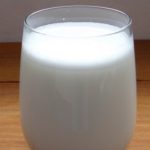
Homemade Coconut Milk (Paleo, AIP, GAPS, Wahls, Whole30)
- Total Time: 8 minutes
- Yield: 2 cups
Instructions
- You want the water to be hot, but not boiling. Add 1-1/2 cups hot water along with all of the coconut into a blender. Blend at high speed for 3 minutes.
- Set a fine mesh strainer over a bowl or large glass measuring cup. Pour the blender contents into the strainer, and use a spoon or spatula to press the milk out of the pulp. This first pressing is coconut cream. (Alternatively, you can pour into a nut milk bag and squeeze the liquid from the pulp.)
- Transfer the dry-pressed coconut pulp back into the blender and add the remaining 1 cup of hot water. Blend at high speed again, this time for 2 minutes.
- Set the fine mesh strainer back over the bowl or large glass measuring cup. Pour the blender contents into the strainer and press the milk out of the pulp again. This second pressing is light coconut milk. Together, they make a beautiful full-fat coconut milk.
- Refrigerate leftover milk. It will separate in the fridge, with the fat rising to the top. Simply heat it gently in a saucepan and stir it with a whisk to blend it into milk again. It will keep for 3 days in the fridge, or 3 months in the freezer.
Notes
- If your local store only sells regularly shredded coconut, you can pulse it in your food processor to chop it up more finely.
- Prep Time: 8 minutes
- Category: Staple
- Method: No Cook
You May Also Be Interested In
Credit: image at top of page from Robert Wetzlmayr via Wikimedia.

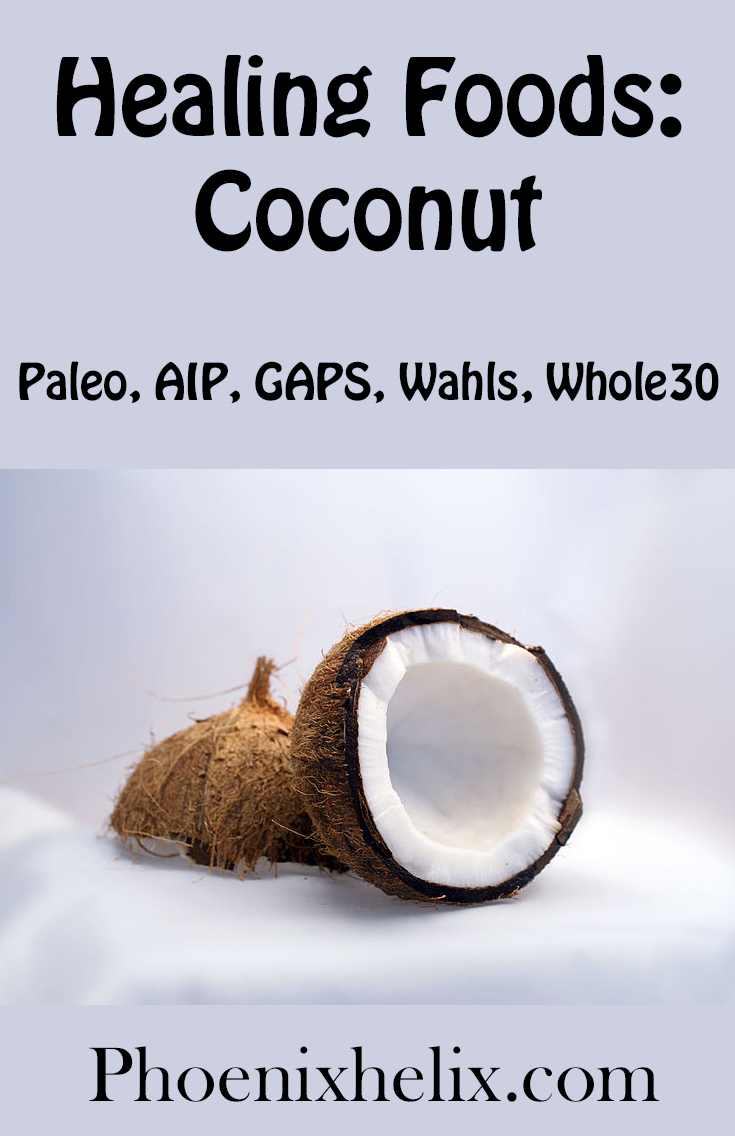

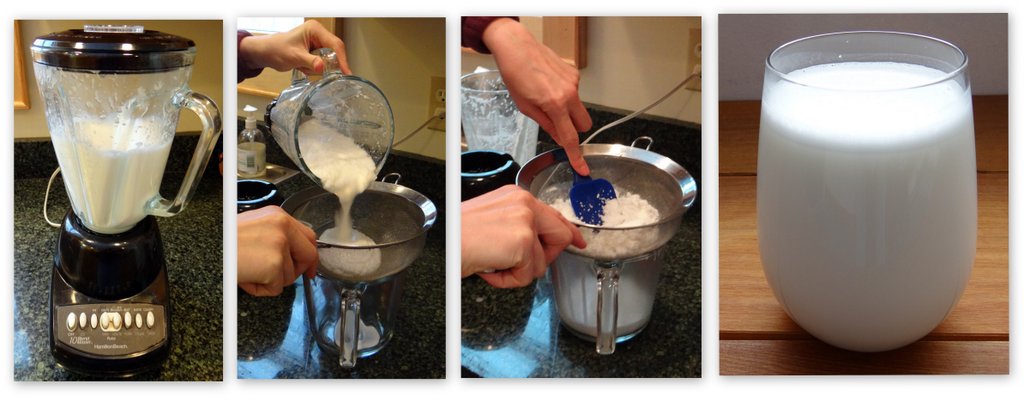
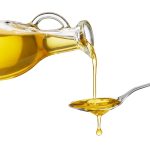
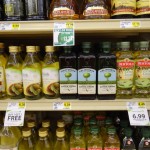
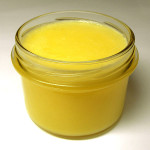

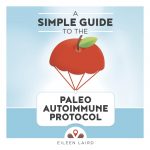

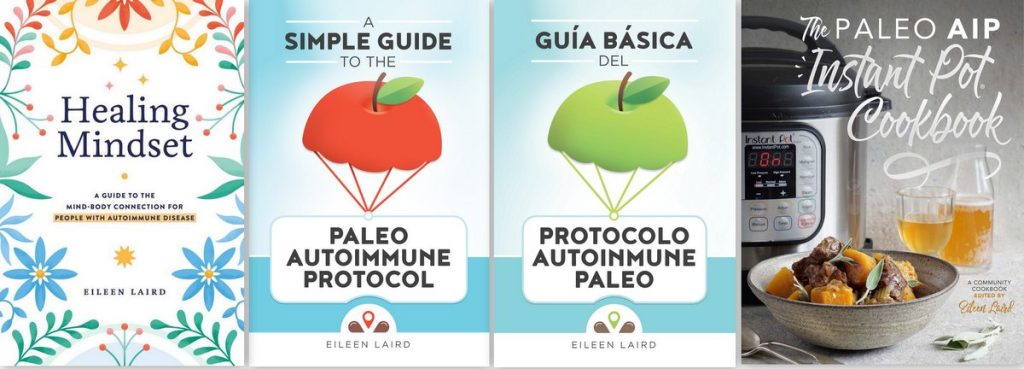
Hi!!
I read that refining strips the coconut oils’ phytonutrients but retains the good MCT fat. What exactly are these phytonutrients and how valuable are they? I’m asking because I found this huge jar of refined coconut oil at Big Lots. $7.50 vs $20-$25 (what I normally pay) for the unrefined. I think I can live without a few phytonutrients for this price difference, but I’d like to know more before making that decision. I hope you can help because I haven’t been able to find anything further on the internet!
Thanks so much,
Alexys
Hi Alexys. Phytonutrients are definitely worthwhile. They have antioxidant, antibiotic, cancer-preventative, anti-inflammatory and other beneficial properties. If you decide you get enough of those through other foods, you’ll want to check how the coconut oil is refined. Unfortunately, that cheap bottle at Big Lots is likely chemically refined, which not only destroys many of the beneficial properties contained in the oil, but leaves behind chemical additives as well. However, if it’s expeller-pressed or steam refined, that’s a gentler method and is a healthy alternative to unrefined. It’s always advertised on the bottle if they use gentle refining methods, because that costs more money to produce and is usually reflected in the retail price.
Hi!
Regarding coconut water, if it is from a fresh coconut, is there a daily limit on how much I can drink?
Hi Barbara. That’s a “know your body” question. Remember that it does contain sugar, so it shouldn’t be a substitute for all the water you drink, and I also recommend drinking coconut water alongside a meal to minimize the blood sugar impact. You can test for yourself the amount that makes you feel your best vs. the amount that might set off a blood sugar rollercoaster.
I had a horrible leaky gut reaction to coconut. I was miserable. After 2 days off of it my symptoms are so much better, but it really flared my histamine issues. Do you have any idea how many days off I need to be before things fully settle down.
Hi Debbie. There’s no rule on how long a food reaction lasts, but I’m happy to hear you are improving quickly. It’s no fun when something like this happens, but it’s helpful information to know going forward. Wishing you symptom-free days soon!
Do you have to strain it afterwards? Seems like leaving the coconut meat could be good for some recipes.
I prefer to strain it, but you don’t have to if you don’t want to Nancy.
Hi! This recipe looks simple yet fantastic! I want to try it this week but am wondering how long it lasts in the fridge? Thanks in advance!
I use mine up within a few days, Hanna.
I found myself intolerant to coconut =( what can I use in replacement? A lot of AIP receipt calls for coconut milk/coconut concentrate.
Hi Joline. Tigernut milk is a good alternative. Here’s a recipe: http://enjoyingthisjourney.com/tigernut-milk-horchata-de-chufa/ . Erin (the blogger behind the recipe) also has a coconut-free Pinterest board: https://www.pinterest.com/erinatjourney/coconut-free-aip/
Hello Eileen! I love coconut in any form. The coconut sugar is low Glycemic and that is the reason I use so much coconut. Love your website!
Hi…tx for the information. Kindly to know for the mature coconut meat in waste form….is it the nutrient still in the coconut meat waste? What about the saturated fat?is it still in the coconut meat waste? Kindly hoping for your reply..thank you
Hi Hakim. Can you explain what you mean by coconut meat waste? Are you talking about what’s leftover after making coconut milk? In that case, most of the fat and nutrition will be in the milk.
Hi, so glad I found your site, very helpful information. I was wondering if you have ever had your coconut milk, after sitting in the frig for a day, become like an egg white consistency? This has happened to me the last two times I have made coconut milk and I can’t figure out why. I have been making coconut milk for a year now and never had it happen before. My source for the coconut was a seller on Amazon that I’ve never used before. The brand was tropical traditions but sold at a discount. Can coconut shreds go bad over time? The milk also had a tangy almost sour taste so I threw it out, 🙁 .
That has never happened to me before. It does sound like you got a bad batch of coconut. Bummer!
Interesting article, thanks!
I also make my own coconut milk and have discovered that making it with unheated water makes a creamier milk that tends to separate less! I just put dry, unsweetened coconut flakes in the blender then add about the same amount of R.O. water from the tap. Blend this on high for a minute or so, then I gradually add more water as it blends, until I reach the amount and consistency that I like. I usually let the motor rest a couple of times during the 3 or 4 minutes that it takes to blend. Then just strain, chill, and enjoy! 🙂 I usually add a pinch of sea salt, tiny bit of Stevia, and a couple drips of vanilla.
Another benefit of Coconut Milk is that it is on the ‘Highly Alkaline’ side of the PH chart which is helpful in fighting diseases like cancer… Dealing with Breast Cancer, I’ve found that this makes a great, inexpensive milk replacement with no added hormones! 🙂
I hear you on the hormones, Ruth. I recently discovered I’m intolerant to dairy, not only because the casein causes me joint pain, but because the hormones have a negative effect on my own hormonal balance. I’m so thankful for coconut milk – such a healthy milk alternative. That’s fascinating that you find it’s creamier if the water isn’t hot. I’ll have to try that myself.
Hi,
I saw your blog post through inlinkz over at butterbeliever.com and I love your blog. I am recommending it to a friend who has rheumatoid arthritis. I am a Filipina and a health blogger. I live under coconut and moringa trees but learn about their uses more from you than from my own countrymen. If you want photos of coconuts and moringa from my own backyard, as well as lots of local stories about the tropics, visit my site.
Picking coconuts from your own backyard – I am officially jealous! My aunt lived in the Philippines for many years, and ever since returning to the US, she’s been homesick for your country. Thanks for saying hello, Michelle.
Just the other day I was thinking, “I need to find a recipe for coconut milk.” I had no idea it would be so easy! Thanks.
I switched to using the Organic Expeller-Pressed Refined Coconut Oil because my family didn’t like the coconut flavor in everything. I buy it by the gallon and use it all the time.
I’m glad to have learned about that oil, for just that reason. I’ve grown accustomed to the taste of coconut, but it’s true that the flavor can be strong! Have fun making the milk. It’s like alchemy in the kitchen.
Eileen this is a most awesome and comprehensive run down of coconut and it’s magic. I talk about coconut as one of natures true superfoods in my Superfoods workshops in australia. I am going to link this whole page in my next newsletter, as i am featuring giveaways with a coconut body product and a fijian coconut flour and an ayurvedic tea that has coconut flakes in it! so this article is awesome…you will get full credits
Blessings on the great work, you coconut rock star!
Shakti x
You are so sweet! Coconut Rock Star – what an awesome title. I should get a T-shirt made. 😉
Just be sure there are no preservatives in the shredded coconut…
I love coconut in all its forms too! Even coconut sugar, which we use very sparingly for special occasions since it has such a great caramel flavor. We just made a batch of coconut milk yesterday and I need to make more tomorrow. The kids devour it. Thanks for sharing on Natural Living Monday!
Lucky kids!!
Great post! I have a hard time getting my hands on unsweetened coconut, but I really want to try this. Happy Easter and thanks so much for sharing this on WNWNW, I’ve pinned it.
Hi Danielle. Have you ever heard of Tropical Traditions? They’re a good source of quality coconut products, and they have frequent sales. If you sign up for their newsletter, they’ll keep you notified about them.
If you live in Canada, they have a distributor in BC and here’s their contact information:
http://tropicaltraditionscanada.com/contactus.html
What are your thoughts on Coconut Sugar? Coconut really is the newest super food (even though it’s been around for awhile, lol)… But I cannot get past the word “sugar”.
Your instincts are right. It is still sugar. Dr. Natasha Campbell-McBride, author of the GAPS diet says no to coconut sugar, because it’s a processed food. The only sweetener she approves is raw honey, in moderation. The paleo leaders vary in their opinions. Some say no to all sweeteners. Others say coconut sugar, maple syrup and raw honey are all ok if used sparingly (not daily). Personally, I stick to the raw honey only, because it’s a whole food with some strong health benefits wrapped up in its sweetness.
That video is hilarious! Trust me, I have to talk to people about the health benefits of coconut all the time…old info dies hard! I simply adore coconut in all of its forms…I should buy stock in it! Really enjoyed your post, thanks for sharing with us on afw this week!
Old info DOES die hard, especially when it keeps getting repeated. I love to read novels, and it’s amazing how often that low-fat dogma is just woven into the character’s comments about food, as if it’s simply fact. I look forward to the day that changes. Maybe we need to start writing novels! Thanks for commenting. I love your website ~ you have so many great recipes.
Featuring your post this week!
Yay! Thanks, Tessa.
Coconut milk sounds like it would be good! Isn’t it amazing all the health benefits God put in the foods He created?
Thanks for sharing at A Humble Bumble 🙂
So, I use refined Spectrum brand coconut oil for sautéing, for example, when I don’t want the coconut taste (hubby has very sensitive palate and finds unrefined coconut oil unpalatable in savory dishes). It is solid white at room temp, just like the unrefined. It sounds different than the refined liquid-at-room-temp oil you describe as having little benefits to me. Do you know if there’s a difference?
Jennifer, Spectrum doesn’t use chemicals in their refining process, so you don’t have to worry about getting anything negative with the oil. However, refining does remove many of the benefits along with the smell and flavor. They come as a package deal. So, I would say your choice is a neutral one – it won’t help or harm.
Update: Jennifer, I’ve done some more research since my original reply. Organic expeller-pressed coconut oil (like the Spectrum Brand you use) still contains the beneficial medium chain fatty acids. What’s lost in the refining process are the phytonutrients and unidentified synergists that make a whole food more beneficial than its extracts. So, although unrefined is best, your oil will still provide a health benefit and is a good choice if your husband won’t eat the unrefined.
Hi! again…with all my buying health food for the past 42 years I found that the very best and cheapest coconut oil is Tropical Traditions Gold label coconut oil. This one is a little pricy but I don’t use this one with heat, strickly for the health bars. For cooking with heat I use their cheapest one. The Gold label is very special, it contains the highest amount of antioxidants among other benefits. Have a great day!
Excellent, comprehensive post – I learned a lot more about coconut! Another amazing property of coconut oil is how it uniquely fuels the brain. The medium chain fats in coconut oil are broken down into ketones by the liver and can cross the blood-brain barrier when blood glucose supplies run short providing instant energy to brain cells. It’s this property that has made coconut oil helpful for some people with Alzheimer’s.
That’s excellent information Deane. Thanks for sharing!
I have found that running it through my juicer works well too.
I love these tips! Thank you. I’m assuming in this case, you use fresh coconut meat?
I have rinsed them in hot water many many times. Once every few washes I use some dish soap. Very easy.
Good tip. Thanks!
I use a nut mylk bag to strain the mylk. Works like a charm. Much easier than a strainer.
Do the bags rinse right out, or do you need to wash them each time?
The coconut milk recipe works great; I have been using it in my smoothies with excellent results. Who knew it would be so easy! Thank you!
I love easy wholesome things! I’m so glad you’re enjoying it.